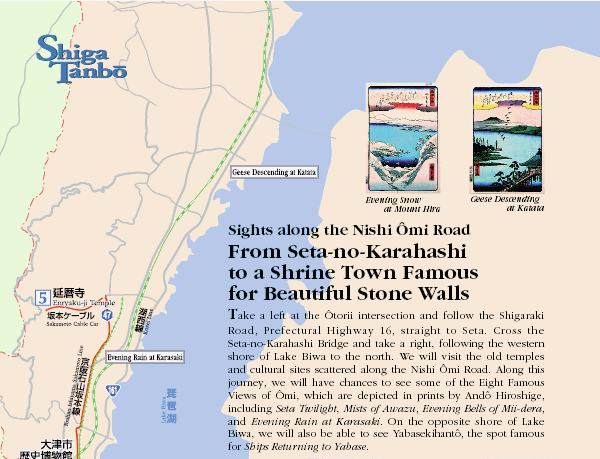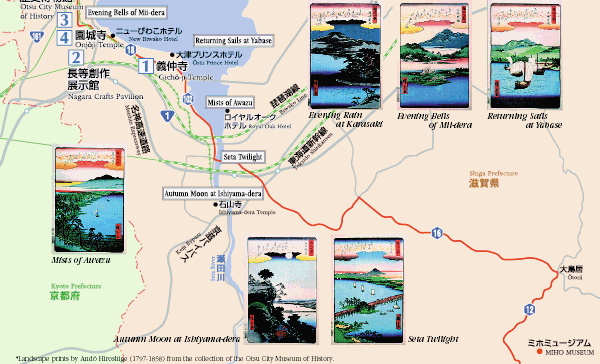|
From the approach to Mii-dera, take the road that follows the Keihan
Ishiyama Sakamoto train line north and take a right at the stonewall of Hiyoshi Shrine.
You will reach the shrine town of Sakamoto, famous for its natural stonewalls that contribute
to the beautiful scenery all around the town. Next, take the Sakamoto Cable Car to Enryaku-ji
Temple where you can stroll through the Tôdô, Saitô, and Yokawa areas of the temple complex.
A shuttle bus also runs between them (March 21-November 30), making access even easier.
|
Sakamoto Tourism Association
6-1-13 Sakamoto, Ôtsu-shi
●Enquiries: Tel. 077-578-6565, Fax 077-578-6567
|
|
5 Enryaku-ji Temple |
|
This temple was founded over 1,200 years ago by Dengyô Daishi Saichô.
Since then, the temple has prospered as the center of the Tendai sect of Buddhism, but it
was burned to the ground the warlord Oda Nobunaga at the end of the 16th century. Restored in the
years following, the present form is more or less as it was by the 1640s. The temple buildings,
sitting amongst cedar trees in the depths of the mountains, are enveloped in an aura of solemnity.
In December 1994, Enryaku-ji was designated as a World Cultural Heritage Site.
|
Enryaku-ji Temple
4220 Hon-chô, Sakamoto, Ôtsu-shi
●Enquiries: Tel. 077-578-0001
●Entrance fee: 550 yen (all three pagodas)
●Opening hours: 8:30-16:00 (Tôdô until 16:30)
*Times change according to season
●Walk 10 minutes from Keihan Sakamoto Station.
Take the Sakamoto Cable Car for 11 minutes, disembark at the Enryaku-ji Station and walk 5 minutes.
|
|



